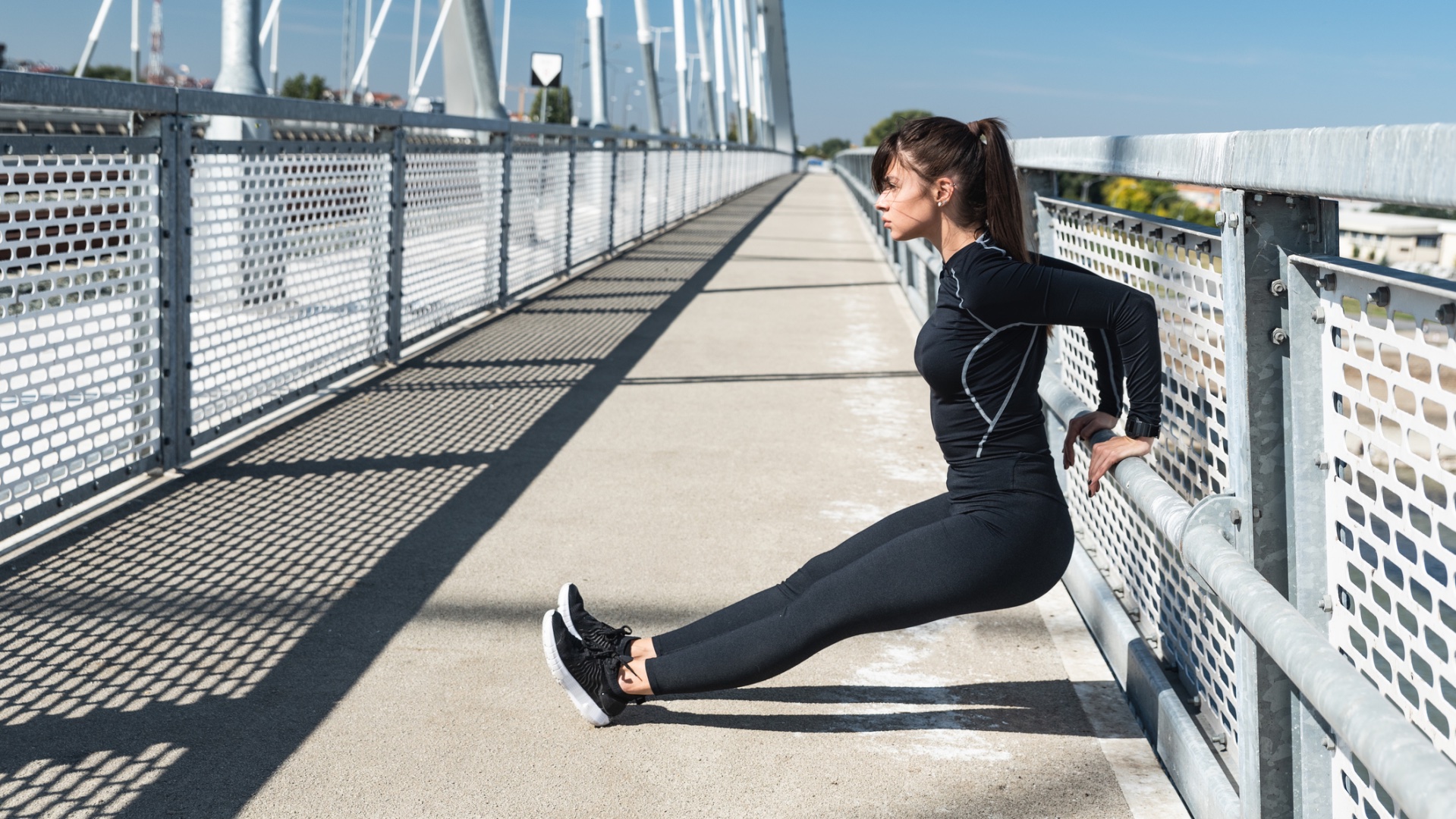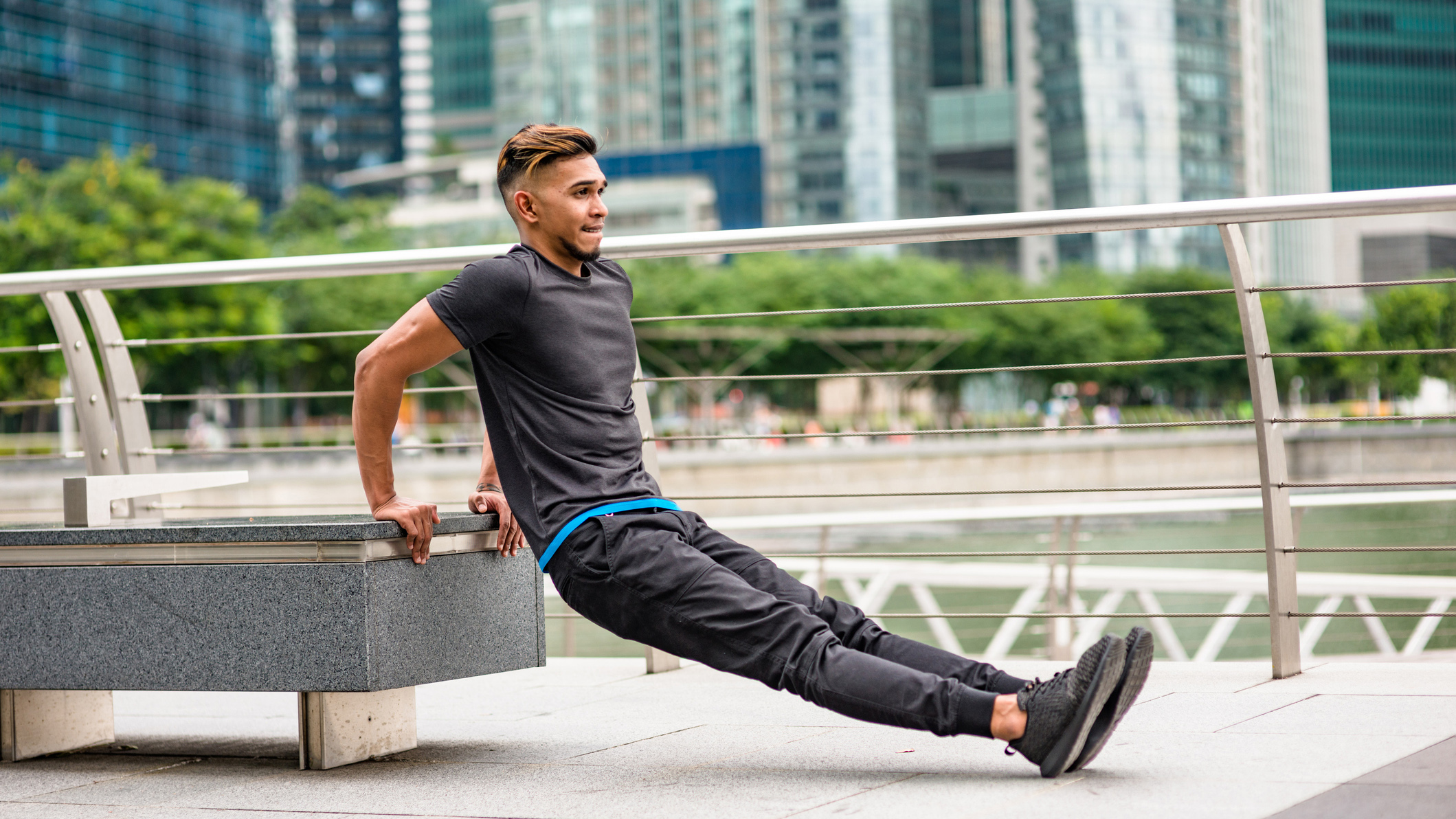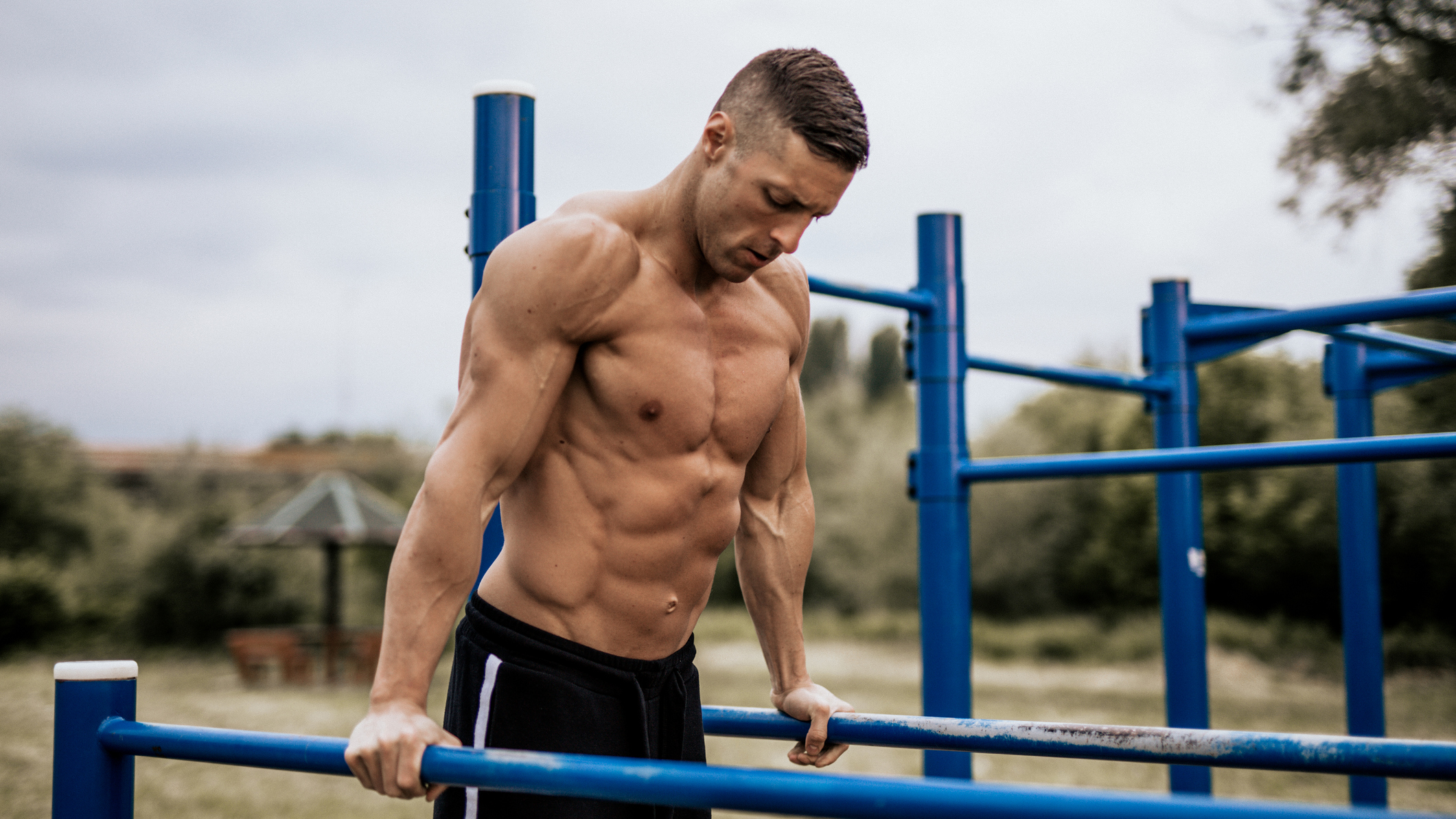

Want to build T-shirt straining arms to rival Chris Hemsworth? Or banish bingo wings for good? Then you need to start doing more tricep dips, pronto.
Contrary to what you might think, the secret to having strong, well-defined arms isn’t solely down to building a pair of bulging biceps. And that’s because your tricep muscles account for a whopping 60 to 70 per cent of the upper arm!
Unfortunately, many people struggle to effectively tap into their tricep muscles or neglect to train them at all during workouts. But, as we’ll reveal shortly, there are many physical benefits to be had from training your triceps regularly, as well as helping you to feel confident enough to get your guns out when the sun’s out.
Thanks to the title of this article, you’ve probably twigged that tricep dips - also known as bench dips, chair dips, and box dips - are a top exercise for targeting the back of your arms. Indeed, this popular bodyweight move is often called the king of tricep exercises because it’s so simple and effective to perform and requires very little equipment.
So, put the dumbbells down and step away from the cable machine. It’s time to learn how to perfect your tricep dips and discover the regressions and progressions you need to take your arms to the next level.
Why should you do tricep dips?
1. They work your triceps and a whole lot more
The triceps, also known as the triceps brachii (Latin for ‘three-headed muscle of the arm)’ consists of three parts: the medial, lateral, and long head found in the back of your arm.
Tricep dips effectively help you build strength, size and power in your triceps and, because they’re basically like doing inverse push ups, they also work the front of your shoulders (anterior deltoids) and chest muscles while testing your core stabiliser muscles and grip strength.
Sign up to the T3 newsletter for smarter living straight to your inbox
Get all the latest news, reviews, deals and buying guides on gorgeous tech, home and active products from the T3 experts

2. They can be done any time, any place, by anyone
There are many ways you can perform tricep dips. Beginners will usually start with bench dips and chair dips, and these can be performed easily enough at home using chairs and stairs, or at a local park using – you guessed it – a bench.
When you’re ready to take things up a gear, you’ll need to increase the weight, and this means you’ll want to take your body from the diagonal position it forms during bench, box and chair dips to a vertical position where your feet are fully off the floor in order to place your full bodyweight on your triceps. This can be achieved using bars found at the gym or in your park, or with gymnastics rings.
3. They’ll help you to push it good
Your triceps are responsible for extending the elbow joint and straightening your arms, and this movement is used in lots of exercises that work other areas of the body, such as bench presses that primarily work the chest and overhead presses that mainly work the shoulders.
Outside of the gym, improving your pushing ability can help you to carry out daily activities such as pushing a shopping trolley or mowing the lawn, and enhance your sporting performance, especially if you play sports like rugby, basketball, and netball where you need to throw or push the ball away from your body with power and speed.
How to do triceps dips
- Place your hands shoulder-width apart on a sturdy chair or bench with your palms facing down, then grip the front edges of the chair or bench, making sure your knuckles are pointing straight ahead.
- Raise your bottom slightly off and in front of the seat, keeping your feet flat and legs bent so your thighs are parallel to the floor. Then, straighten your arms. This is your start position.
- Slowly lower your bottom to the floor until your arms form 90-degree angles, ensuring you keep a straight back and your shoulders back to avoid hunching over.
- Next, engage your triceps and straighten your elbows to drive yourself back up to the start position and complete one rep.
How to do a tricep dip: Dos and don’ts
DO: try to maintain an upright position by looking straight ahead with your chin up. Leaning forwards can make this exercise more chest dominant.
DON’T: let your shoulders round or hunch over, as this can put unnecessary strain on the shoulders. Aim to keep them down and relaxed.
DO: keep your elbows tucked in as close to your body as possible, and avoid locking out your elbows at the top of the movement to keep your triceps under constant tension.
DON’T: bounce at the bottom of the movement. Instead, pause slightly, and consciously contract your triceps to raise you back up to the start position.
DO: stay within a comfortable range of movement to avoid putting strain on your wrists, shoulders and chest. Once you start to get stronger, you can increase your range of motion to perform a full dip.

How to do tricep dips: Regressions & progressions
If you’re new to fitness, or you have never tried to train your triceps before, you might find the basic tricep bench dip above a bit too taxing. But don’t worry - everyone has to start somewhere!
Go back to basics by removing the height of a chair or bench (which increases your body weight) and take your tricep dips down to the floor instead, as seen here (Youtube link).
Once you’ve mastered the basic tricep bench dip with bent knees and can perform it with good form, it’s time to increase the weight placed on your triceps. You can do this by straightening your legs out in front of you and doing straight-leg tricep dips (Youtube link). From there, you can increase the difficulty further by lifting one leg off the floor and increasing it further still by placing both your feet on a bench or sturdy chair in front of you.
Eventually, you’ll be strong enough to remove all assistance and move on to doing full bodyweight dips on parallel bars or a ‘dip station’ at the gym or park or ring dips using gymnastic rings. And don’t forget, you can add additional resistance by using a dip belt (retailer link).
Jo is a London-based freelance journalist and content creator specialising in fitness, health, lifestyle and beauty. With a degree in Journalism, Film & Broadcasting from Cardiff University and almost 20 years’ experience in the industry, she interviews celebrities and Olympians for a living, while testing out the latest beauty, hair, wellness and fitness gadgets. As a Level 3 Personal Trainer and author of several fitness guides, she gets to try the coolest workouts while reviewing active travel destinations and writing investigative features about the wonderful world of wellbeing for many of the UK’s top magazines, newspapers and digital publications. When she’s not sitting at her laptop, Jo likes exploring new walking spots with her beagle, gardening, and DIY. She is also one of the few people on the planet still obsessed with what’s coming up in Phase 5 of the Marvel Cinematic Universe.